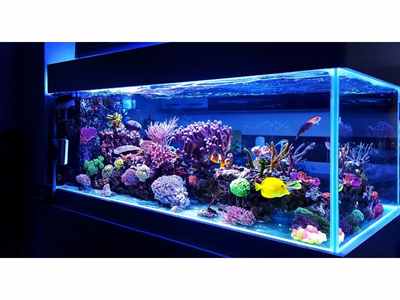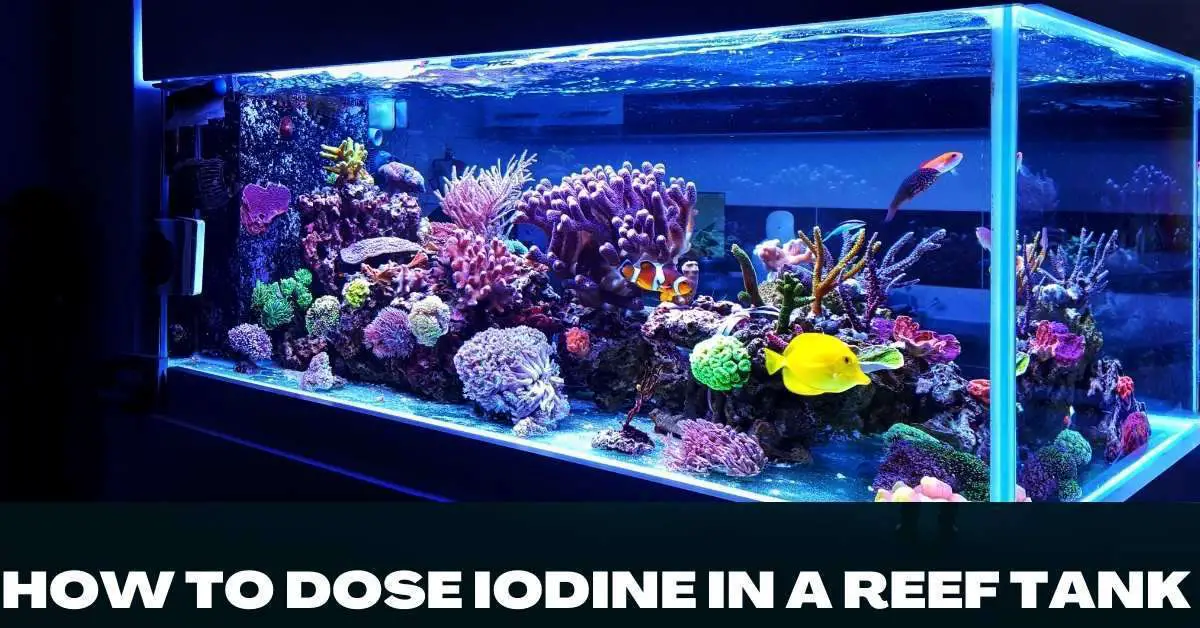Iodine is a crucial element for reef tanks, and dosing iodine properly is essential for the health of your corals and other invertebrates. In this ultimate guide, we’ll cover everything you need to know about Iodine, from its benefits and function in the reef tank to the proper way to dose it. In this ultimate guide, we’ll teach you everything you need to know about dosing Iodine in a reef tank.
Why is Iodine essential for a reef tank?
Iodine is an essential part of a reef tank for many reasons. It helps to maintain the health of the corals and other invertebrates in the tank and can even help to control algae growth. Iodine is also necessary for the proper functioning of the immune system and can help to prevent disease in both fish and invertebrates.
One of the most critical roles of Iodine in a reef tank is to maintain the health of the corals. Iodine helps promote corals’ growth and can even help prevent bleaching. Iodine is also necessary for the proper formation of coral skeletons.

Iodine can also help to control algae growth in a reef tank. Algae are a natural part of the reef ecosystem but can become problematic when they grow out of control. Iodine can help to control algae growth by inhibiting the growth of algae cells.
We have tried three methods of iodine dosing, and we will explain each. You need to follow the iodine-to-water ratio suggested on your iodine product label.
Drip Method
Iodine levels in reef tanks can deplete over time, leading to problems such as slow growth, poor coloration, and even death. The best way to maintain healthy iodine levels in your reef tank is to dose iodine regularly using the drip method.
Here’s a step-by-step guide on how to dose Iodine using the drip method:
- Begin by mixing your iodine solution. You can use a commercial iodine solution or make your own by mixing one teaspoon of iodine crystals with one gallon of distilled water.
- Once the iodine solution is mixed, slowly drip it into your reef tank for over an hour.
- After an hour, check your iodine levels using an iodine test kit.
- If your iodine levels are low, continue drip iodine into your reef tank until it reaches the desired level.
- Once your iodine levels are where they need to be, stop dosing and enjoy your healthy reef tank!
Broadcast Method
While Iodine is naturally present in seawater, the levels can deplete over time, so it’s essential to supplement your reef tank with Iodine regularly. The best way to do this is using the broadcast method, which involves adding Iodine to your aquarium’s main display tank.
Here’s a step-by-step guide to using the broadcast method to dose iodine in your reef tank:
- Begin by mixing the iodine supplement with fresh, dechlorinated water. The ratio of Iodine to water will vary depending on the product you’re using, so be sure to follow the directions on the package.
- Once the iodine solution is mixed, slowly pour it into your aquarium’s main display tank.
- Be sure to distribute the iodine solution throughout the tank evenly.
- Allow the Iodine to remain in the tank for at least 30 minutes before turning on your aquarium’s filtration system.
- After 30 minutes, you can turn on your aquarium’s filtration system and continue monitoring the iodine levels in the water.
It’s essential to monitor the iodine levels in your reef tank regularly, as too much Iodine can be harmful to your marine creatures. If the iodine levels are too high, you can remove some water from your tank and replace it with fresh, dechlorinated water.
Following these simple steps, you can quickly and effectively dose Iodine in your reef tank using the broadcast method.
Manual Method
Dosing iodine in reef tanks is essential for the health of your corals and other invertebrates. Iodine is a micronutrient necessary for these animals’ growth and health. Most reef keepers use the manual dosing method to add Iodine to their tanks, and this method is simple and effective and does not require any special equipment.
Here is a step-by-step guide to manual dosing of Iodine in a reef tank:
- Begin by mixing the iodine solution. To do this, add eight drops of iodine solution for every aquarium water gallon (3.8 L). Though it’s a standard, you should always look for product suggestions.
- Once the iodine solution is mixed, add it to the aquarium water. Add the iodine solution to the main display tank, not the sump or refugium.
- The iodine solution will quickly dissipate in the aquarium water, so it is important to dose it daily. For best results, dose the iodine solution in the morning before the lights come on.
- It is essential to monitor the iodine levels in your reef tank. You can measure iodine levels with a simple test kit. If the iodine levels are too low, increase the dose accordingly. If the iodine levels are too high, decrease the amount or discontinue use for a few days.
- you should maintain iodine levels at 0.04-0.06 ppm.
It is a simple guide to the manual dosing of Iodine in a reef tank. With a bit of practice, you can easily maintain healthy iodine levels in your tank.
FAQ`S
What are the signs of iodine deficiency in a reef tank?
There are a few signs that may indicate iodine deficiency in a reef tank:
-A lack of Iodine may stunt the growth of corals and other marine invertebrates.
-A lack of Iodine may dull the colors of corals and other invertebrates
-There may be an increase in algae growth
-Fish may be listless and have difficulty feeding
If you suspect your reef tank may be Iodine deficient, it is best to consult with a reef aquarium specialist to have your water tested and develop a plan to correct the deficiency.
How do I know if my reef tank has enough Iodine?
There are a few things you can look for to determine if your reef tank has enough Iodine:
-The algae in your tank should be a healthy green color.
-Your coral should be growing and expanding.
-If you have anemones in your tank, they should be open and feeding.
If you notice any of these things happening, then it is likely that your reef tank has enough Iodine.
What are the risks of using Iodine in a reef tank?
Adding too much Iodine to a reef tank can cause problems such as decreased growth, bleaching of coral, and death of invertebrates. Following the directions on the product label and consulting with a reef aquarium expert before adding Iodine to your tank is essential.
What should I do if I forget to use Iodine in a Reef Tank?
If you forget to add Iodine to your reef tank, don’t worry! The corals and other invertebrates in your tank will be just delicate. Iodine is only necessary for minimal amounts, so your tank will be fine if you provide additional sources of trace elements and nutrients.
How often should I use Iodine in a Reef Tank?
It is a difficult question to answer, as it depends on several factors, including the size and type of your reef tank. However, it is recommended that you use Iodine in your reef tank every week to maintain the health of your corals and other marine life. You can always test and see if your reef tank water has the right amount and apply Iodine if needed.
Concluding Remarks
We hope this guide has helped us understand how to dose Iodine in a reef tank. While there are many factors to consider when dosing Iodine, we believe following this guide’s recommendations will help ensure a healthy reef tank.

